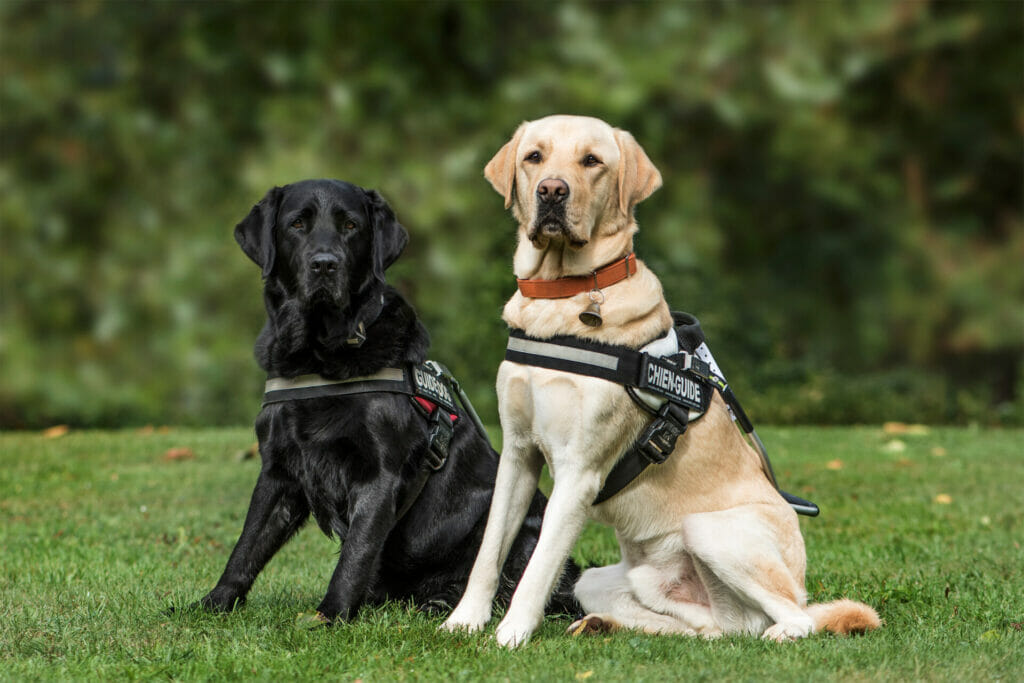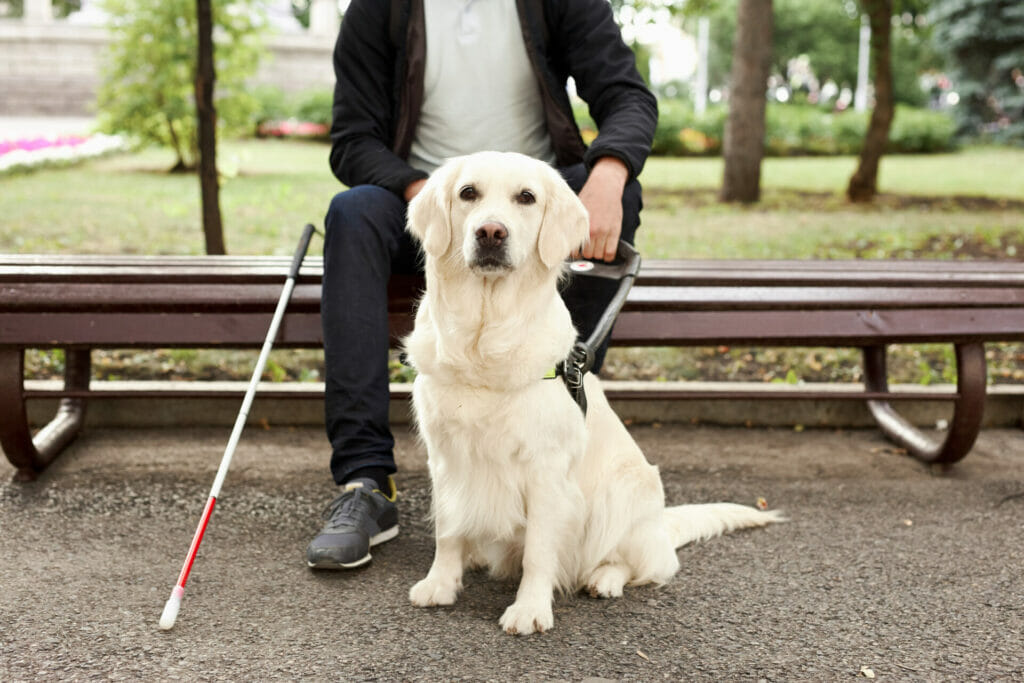We chatted with The Guide Dog Foundation’s Rivi Israel to learn more about the training process and the vast capabilities of these incredible pups.
What’s your role at the Guide Dog Foundation, Rivi? How did you initially get involved?
I’m the Program Manager here and have been with the Guide Dog Foundation for 5 years. Before that, I was actually with another guide dog school for 18 years. I’ve been in the community for a while. And GDF is the most amazing place with great staff and volunteers, and happy pups. I also appreciate the focus on positive reinforcement training (it makes a big difference with foundation skills).
How did the Guide Dog Foundation start?
The Guide Dog Foundation started in 1946 when 6 community members wanted to make a school for people with vision loss. The goal is to help better their lives and allow for more independence!
Why are guide dogs important?
Guide dogs are important because they really open up people’s lives. For someone with vision loss or vision challenges, guide dogs make the world more accessible. Essentially, those with vision challenges can have more freedom, independence, and an increased ability to pursue dreams. It’s a unique and wonderful partnership between the handler and dog. The dogs are trained to think and problem-solve to get their person to safety.
How many dogs do you raise a year?
GDF raises 60-70 dogs per year. During the first few years at the Guide Dog Foundation (back in the 1940s), there were smaller classes, but it’s built up! There’s a 1 instructor to 2 pups ratio, which allows for hands-on, specialized training.
How does the training process work?
The dogs originate from NY and are flown out to “puppy raisers,” who teach them more basic commands, love, and socialization. The raisers expose them to all kinds of situations for their first year and a half. Afterward, the dogs undergo extensive training for 5 months. In the first 3 months of the intensive training, dogs are alone to build and reinforce foundational training skills. A key aspect of training consists of teaching the dogs to disobey commands if a situation is unsafe. The dogs learn to problem solve in real time. For the next stage, the dogs undergo 2 months of training paired with their future, visually impaired handler. This training teaches the handler how to work with their dog and to ensure it’s a good match. Finally, the dog is given to the handler (free of charge, thanks to generous donors!).

How do you pair them?
It’s all about fit: each dog and person has a specific walking speed. Dogs and handlers are matched by that cadence. Other factors include environment (e.g., some dogs are better fits for cities), personality, and the control factor. It’s important to properly match the dog to the handler so that if a dog gets distracted by a squirrel, for example, they have a handler who can keep them in line.
How long does it take to see if the match is a good fit? Is there a trial period?
Our guide dogs are in high demand–in part because they’re so well trained, and in part because they’re given at no cost to the handler. So when someone is ready for a dog, they can apply through the site to fill out medical reports and visit in person. All guide dogs spend 2 years with personal training, so the Foundation understands their personality, which makes it easier to match with a handler.
What makes guide dogs super dogs?
Guide dogs are super because they keep their handlers safe. Something seemingly basic as stopping for a curb is enormous for someone with vision impairment. But it’s more than that– guide dogs are trained to be intelligently disobedient, meaning that if a car is coming, the dog is trained to intelligently disobey the command of their handler (say, for a hybrid car, the handler can’t hear).
How do you train for obstacle avoidance and intelligent disobedience?
It is all about educating through consistency. The trainer shows the dog the problem and the solution, which is then rewarded with positive reinforcement. The dogs then learn to understand potential problems (like an obstacle in the road), and you can witness their problem-solving as they think through a solution on their own.
Is there a specific way for people to interact with guide dogs that we see on the street?
While you might want to pet them, distracting the dog (with noises or pets) while the guide dog is working puts the blind person in jeopardy. Instead, try saying hi to the person with the guide dog and let them know if you have your dog. It is important to remember that they’re people just like us; they just use a different tool for mobility!
How long can guide dogs work (daily and for their lifetime)?
Guide dogs typically retire when they’re 6-7 years old. When this happens, the visually impaired person will contact the Foundation to retire the dog and likely apply for a successor dog. Usually, the handler will see changes in the pup when they’re ready to retire. Maybe they’re not as excited to work; they walk slower, and it’s important for handlers to listen to the dogs. The Foundation also checks in on graduates once they reach a certain age to assist with retirement.
How can people get involved with the Guide Dog Foundation?
There are so many ways to get involved! We are always looking for puppy raisers from 8 weeks to 1.5 years to introduce them to the world, and it is so fun to help them with all their first experiences. We also are always accepting donations to help us continue raising guide dogs. You can learn more on our website, guidedog.org to learn more.




















